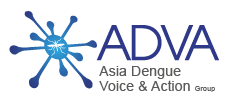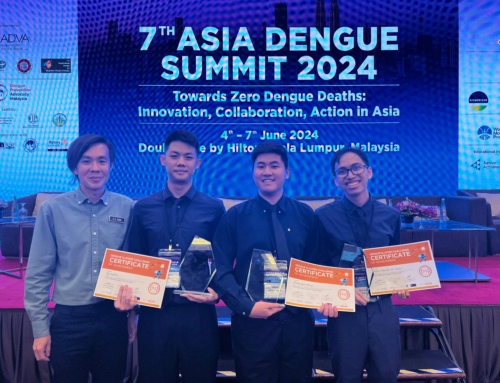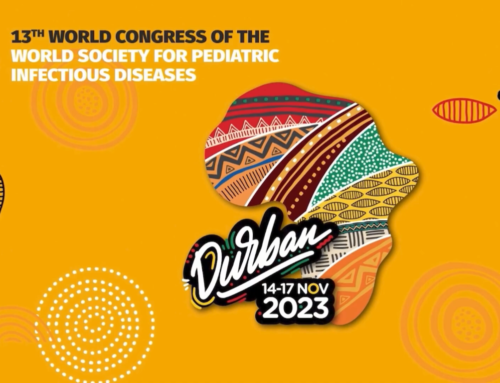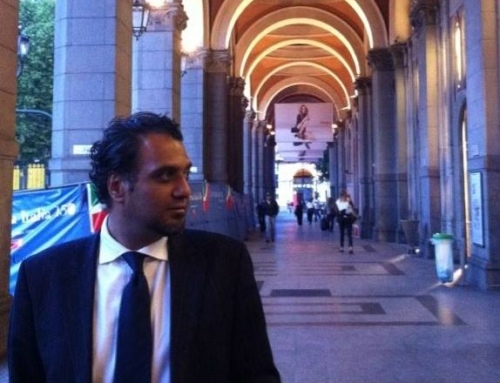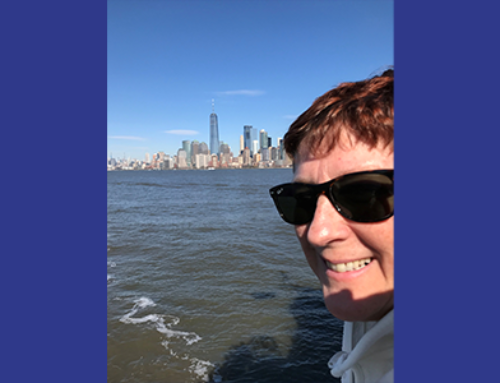“I was born and raised in Milan, but I have been living like an expat since 2007.”
“I moved to Denmark in 2008 for my PhD studies in Nanotechnology, and since then I spent most of my professional time between Copenhagen and Taipei, where I was exchange student during the doctorate program, and where we opened our BluSense subsidiary in 2015. Before launching BluSense with my co-founders, Marco and Robert, I took various entrepreneurship courses to “learn the startup game”, which is significantly different from the life of a scientist. Writing business plans is very different than writing a scientific paper, and chasing investors is quite another game than chasing research grants. Furthermore, I had to visit regularly dengue endemic countries to visit clinics, plan clinical studies, meet users and key opinion leaders in order to truly understand the needs of better diagnostics technologies. I consider my background therefore a mixture of science, entrepreneurship and business development”
“My responsibilities tend to be cyclical as natural in my role of CEO in an evolving young company. I started in the laboratory with my co-founders before moving to nearly full-time fundraising-related tasks, to then move almost entirely to business development and market-creation. Now I am in charge of the company medium-to-long term strategies, managing investors relationships, conducting market analyses and scouting new business opportunities for our technology. I naturally act as the main point of communication between the board of directors, our shareholders, and internal operations. I’m trying to find time for hands-on activities, from designing illustrator files for marketing material, training distributors to the use of our products, writing protocols for clinical studies, to supervising the project of building a new production line.”
“We were developing technology for measuring different biomarkers, while at the same time looking for the killer application, the one which could have the highest impact and provide a true value to the users, when compared to other existing products. Because of the collaboration with the University of Queensland we investigated the field of Dengue fever diagnostics. We’ve noticed that there was a considerable market gap due to lack of innovation resulting in underperforming commercially available products. Likely, large players are less interested in such “niche” markets, and Western startups are too little exposed to tropical diseases knowledge to innovate in that space. It was in 2015 when we decided to apply our diagnostics technology to dengue fever, as at that time we were applying our prototype to more “Western” diseases, where competition was fierce (and the impact appeal low). Only later did we realize that indeed we would be able to provide among the best performing products in the market, with associated impact to the endemic region healthcare systems. That was the moment where we were like “that’s it, we have in our hands a device that could really impact millions of people’s lives!”.
“It’s great to be able to develop technologies for responses to viruses. It’s compelling for me that it’s the technology that has a strong impact on people. It’s not the greatest of all businesses in terms of profitability of the products, and that’s probably among the reasons why there is little innovation in dengue diagnostics or topical diseases in general. Bringing technological advancements to neglected sectors of healthcare feels like the right thing to do, and at BluSense we are proud of it. It is of course of great help that our investors share our passion and commitment to making an impact more than making only a large profit.”
“It was thanks to a scientific collaboration which my co-founder Marco had with the University of Queensland in Australia, that I heard about Dengue fever for the first time. It’s not easy to comprehend the incidence of dengue when you’re so far away from countries where it’s prevalent. Here, in Denmark, we hear only echoes about this disease. But once you start working in the field and travelling to countries where it’s widespread, it’s impossible not to face the force of this virus. It’s not merely a few people, it’s almost half of the human population that is in danger of being exposed to dengue. Before 2015 dengue was nearly unheard of in Taiwan, but due to climate change there are regular outbreaks across the country every year, and dengue is now among the diseases treated by national policy agenda. Only once you live in an endemic place, or when you start working in the field, you realize what a heavy burden it is to some regions of the world.”
“After I started working in this business, I unexpectedly met many people that had contracted dengue, even in Europe. On few occasions, after explaining what we do I was given stories of infections and quarantines in local hospitals. I was surprised to discover how many travelers contract dengue during holidays, and often they told me no proper testing was done to them, leaving them for days in uncertainty.”
“But it’s during field trips where I fully grasp the burden of Dengue in some parts of the world. From Delhi to Bogota’, during post-rainy season (when mosquitos are most numerous and voracious) you can find all sort of billboards, along highways or printed on the sides of buses, reminding people how to prevent the harbouring of mosquitoes, e.g. emptying vases from water. When you see that large number of spaces usually dedicated to commercials are used for advises on how to prevent dengue, you really realize what a huge problem it is in these countries.”
“If you develop a product that doesn’t exist, it takes time to educate the market. It’s not an easy journey, but an exciting one. If you’re building a product that’s neither a laboratory test nor a rapid diagnostics test, but something that works as good as laboratory test and is as easy to use as a rapid test, it takes effort to explain that to people. Not everyone easily understands the concept of microfluidics or nanotechnology behind our products, so there’s a bit of education involved when introducing novel and innovative technologies such as ours. Of course, the vast bulk of people I meet are well educated, representing lab managers or Key Opinion Leaders, and the response is always favorable. But it’s not always like this when our distributors go out into the field. There, people that are used to working with rapid diagnostics tests and nothing else can be reluctant towards new technologies. Even though the price point is similar, and the quality is better, the novelty factor sometimes causes adoption issues. For more receptive people, it’s fascinating to hear about Immuno-Magnetic Assay, our patented technology. They see the potential and believe that it’s going to have a big positive impact on the dengue health sector.”
“Even without BluSense it’s unlikely I would have remained in Academia for long as I do not have enough patience nor probably the right personality for being a scientist. I’d probably still be involved in innovation and likely in health care, maybe from some other aspects that I can’t foresee right now. Surely, I would be doing what I like the most: finding out-of-the-box solutions for addressing problems, asking provocative questions, convincing people to join a cause or project, and finding new perspectives to identify alternative scenarios. Independently on the sector, those are useful activities for advancing innovation”.
Filippo Bosco
CEO,
BluSense Diagnostics ApS
Follow his work at:
Facebook – BluSense Diagnostics
LinkedIn – @BluSenseDiagnostics
Twitter – @BluSenseDx
First published to Facebook on 6 July 2020
